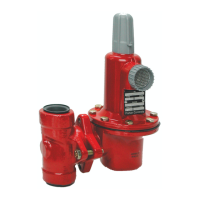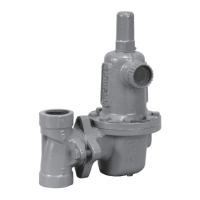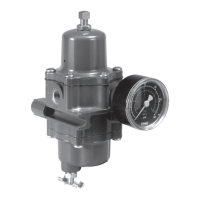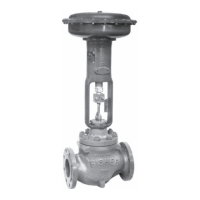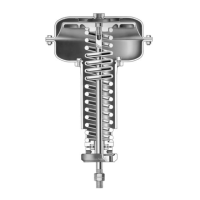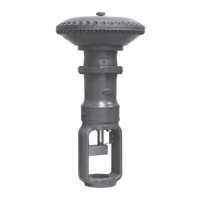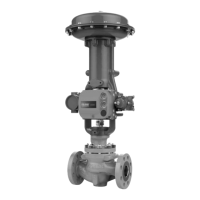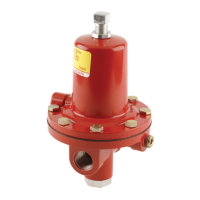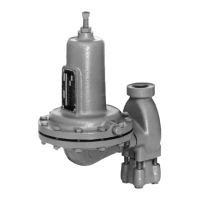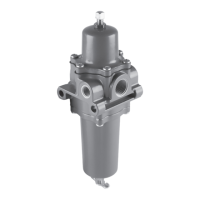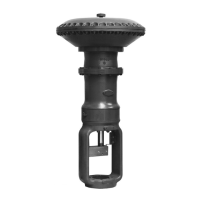627 Series
3
those limits. The Type 627R, 627LR,
or 627MR regulator with internal relief
will provide downstream overpressure
protection within the limits given in
the Specications section, Tables 1, 2,
3, and 4. If these limits are exceeded,
additional downstream overpressure
protection must be provided by the user.
Additionally, physical damage to the
regulator could cause personal injury or
property damage due to escaping gas.
To avoid such injury or damage, install
the regulator in a safe location.
Principle of Operation
Refer to Figure 2. When downstream demand
decreases, the pressure under the diaphragm
increases. This pressure overcomes the regulator
setting (which is set by a spring). Through the action
of the pusher post assembly, lever, and valve stem
the valve disk moves closer to the orice and reduces
gas ow. If demand downstream increases, pressure
under the diaphragm decreases. Spring force pushes
the pusher post assembly downward and the valve
disk moves away from the orice.
Product Description
Types 627 and 627H Direct-Operated Pressure
Reducing Regulators—The Types 627 and 627H
regulators provide economical pressure reducing
control for a variety of residential, commercial, and
industrial applications. The regulator pitot tube located
in a high velocity stream provides dynamic boost that
compensates for outlet pressure drop.
Type 627 Long Body—The Type 627 Long Body
regulator can be used as a drop-in replacement for
existing Type 630 installations without the need to
modify piping.
Internal Relief for Type 627R, 627LR, or
627MR Regulator—The Type 627R internal relief
performance values were obtained by removing the
disk assembly from the regulator. For the Type 627R,
627LR, or 627MR regulator, the internal relief across
the diaphragm provides overpressure protection in
many applications. As outlet pressures build up above
the start-to-discharge point, the diaphragm moves off
the relief valve seat allowing the excess pressure to
bleed out through the screened vent.
For extra protection, should failure conditions exist
which would prevent normal operation of the regulator
Figure 2. Type 627 Operational Schematic
INLET PRESSURE
OUTLET PRESSURE
ATMOSPHERIC PRESSURE
INLET PRESSURE
OUTLET PRESSURE
ATMOSPHERIC PRESSURE
INLET PRESSURE
OUTLET PRESSURE
ATMOSPHERIC PRESSURE
A6557
CONTROL SPRING
STEM
VALVE DISK
ORIFICE
LEVER
PUSHER POST
DIAPHRAGM
ADJUSTING SCREW

